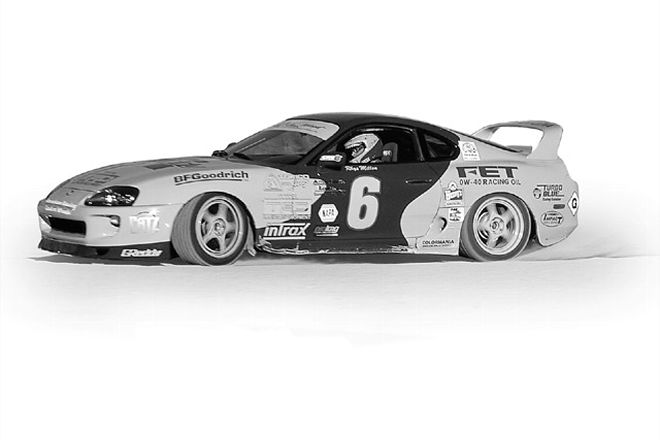Guess what the Romans One does in his first month as Editor? He assigns me more tech articles.
A lot more. That's not good for me. And it sure as hell ain't good for you. I'm certain it must have something to do with my telling the Club NSX girls that he wears tight leather underwear. Hey, we all need an edge, right? Anyway, to make my job a little bit easier, I've decided to simplify this assignment. So now what was originally supposed to be some involved seminar on suspension has been effectively bastardized by yours truly into nothing more than a quasi-tech-oriented cheat sheet. Like Cliffs Notes, only simpler. In short, what I have done is broken down some of the finer points and intricacies of automobile suspension into words and phrases that are useful and ignored the stuff that only flabby little auto nerds find interesting. So, read on and impress your friends at the next party without really knowing a thing. I do it all the time. (Actually, the entire Super Street staff makes a habit of talking way over our heads.)
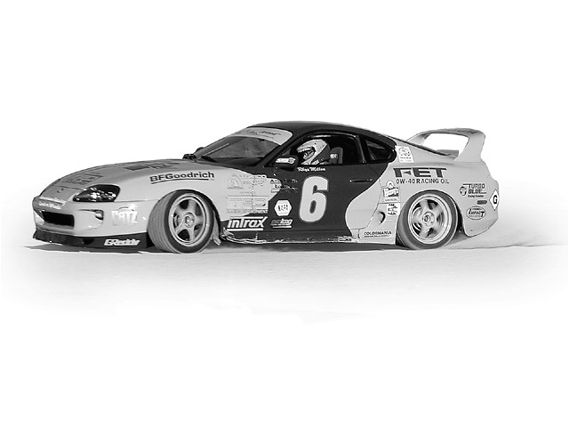 |
Suspension Tech Guide - Speaking of Suspension
|
Suspension Tech Guide - Speaking of Suspension
Let's go over the basics. The suspension is made up of the following components: springs, shocks or struts, bushings, mounts, and a linkage system. Most drag racers focus all their energy on jamming for horsepower, but don't pay nearly as much attention on attaining the optimum suspension setup for their car. I'm not talking about adjusting the damping, but full-on R&D. Most racers don't fail to recognize the fact that the suspension is a key component of getting good traction (which translates into efficient power transfer), they just choose to disregard it. So, to get the low-down on fine-tuning a suspension, I talked to some racers who don't.
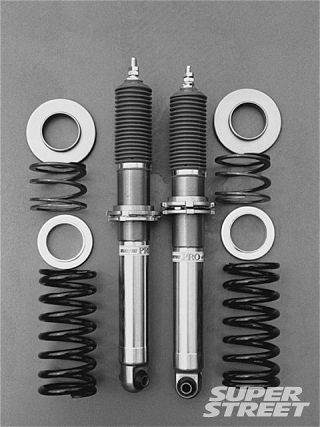 |
Suspension Tech Guide - Speaking of Suspension
|
Suspension Tech Guide - Speaking of Suspension
Five Basic Facts
Basic Fact 1: The essential ingredient to springs is the spring rate. There are two types of spring rates: progressive and linear. The key to springs is remembering: The higher the spring rate, the stiffer the ride and the less travel distance.
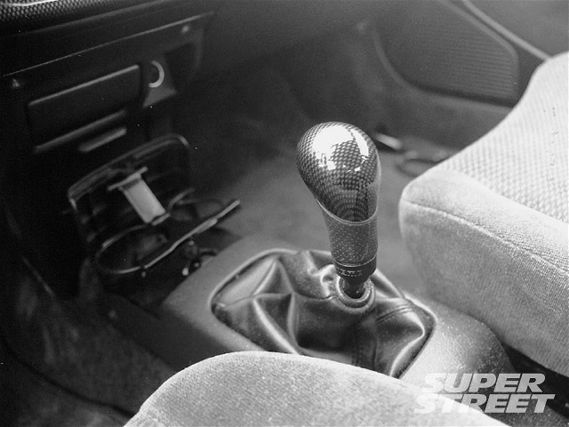 |
Suspension Tech Guide - Speaking of Suspension
|
Suspension Tech Guide - Speaking of Suspension
Basic Fact 2: Insufficient travel can also show up in corners because when a car leans into a corner, it uses up travel. If too much travel is used, there won't be enough left over to absorb the bumps in the turn. That means the car loses grip. So, going low low low can actually take away from the handling.
Basic Fact 3: If you're going to swap out your stock springs, plan on getting some kind of performance shock absorber, as well. Lowering springs have higher spring rates and less travel and will usually over-power the factory shocks.
Basic Fact 4: Shock absorbers (and struts) control the springs and work in two directions: compression and rebound damping. Compression affects the tires and how they stay with the road. Rebound helps control the body/chassis motion. When you build up your car and swap out your stock rollers for bigger wheels and tires, you're adding an extra load on the suspension. (The heavier the wheels and tires, the more the shocks have to work in compression.) So, performance shocks are needed for better damping.
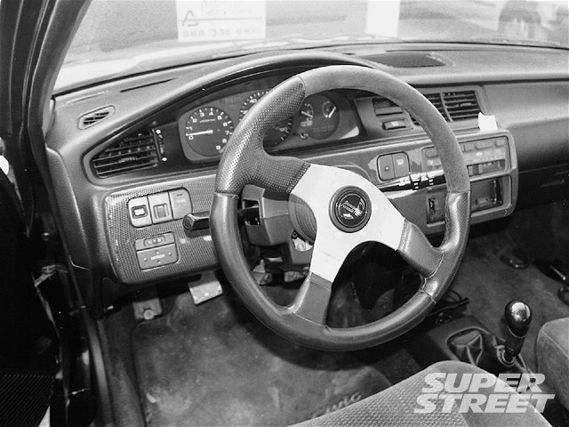 |
Suspension Tech Guide - Speaking of Suspension
|
Suspension Tech Guide - Speaking of Suspension
Basic Fact 5: Stock cars lower differently. Take two Civics straight from the showroom-you'll find that each individual car stands differently. And when swapping springs on a Honda or Acura, you'll notice that the driver-side drop 1/4 inch to 1/2 inch farther than the passenger side. That's just the way they are built. And that's why adjustables and coilovers are so great. They compensate for these inconsistencies.
Drag Racing Set-Ups For Hondas
Tip 1: When setting up a Honda for drag racing, go with high-rate springs on the rear and slightly lower rates up front. That helps the car stay low at the nose and prevents it from losing valuable time at the launch and during shifts when the car is most prone to pop up. Some racers even go as far as welding their shocks-in effect, making the tire the car's only form of rear suspension. While we don't recommend this, we do suggest you keep the rear suspension as stiff as possible-that means the highest setting on adjustables.
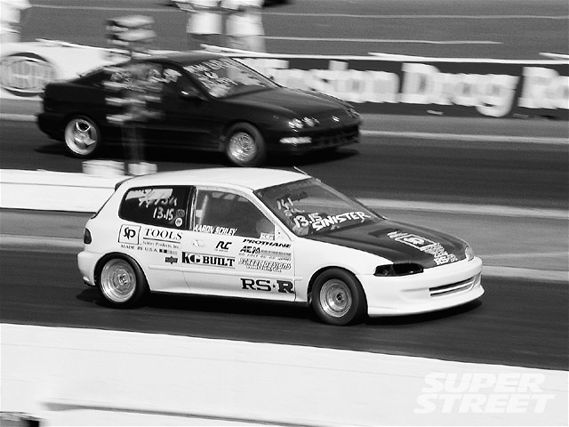 |
Suspension Tech Guide - Speaking of Suspension
|
Suspension Tech Guide - Speaking of Suspension
Tip 2: To get the ultimate stiffness in back, most of the top racers go with custom springs. For those who can't afford them, you may consider replacing the rear springs in your '88-and-up Civic with the front springs from a heavier car, like a Legend or an Accord.
Tip 3: For the front, the car must be as stiff as possible to prevent the tires from rubbing against the inner fender and to keep the front end from popping up. We highly recommend going with a short stroke shock that is also limited to rebound damping. If you can't afford a rebound adjustable shock-like the ones from H&R and Penske-then you can do what most racers do: strap the springs down tight with wire cables. Keep in mind that all these setups are for race applications only and will lead to disaster on the street. And that would be bad.
Drag Racing Setups For RWDs
Tip 1: Again, adjustables are in order. The optimum setup for high-powered RWD cars is medium stiffness in the rear and super-soft up front. That's because weight moves from front to back-loading up the rear of the car. By loading the rear of the car, all weight is transferred from the front to the rear tires, keeping its back-half planted to the ground. When that happens, if you can get the car to hook up-get good weight transfer-then you are able to jerk the car off the line as well as during shifts.
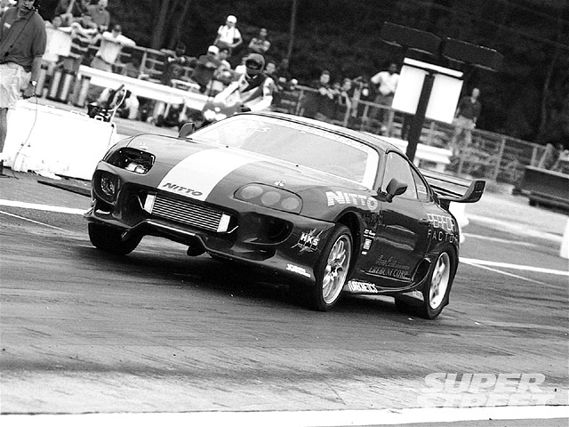 |
Suspension Tech Guide - Speaking of Suspension
|
Suspension Tech Guide - Speaking of Suspension
Tip 2: If you can afford a good coilover kit, you can special-order your spring rates. Remember to go stiff in back, with a little bit of flex. You don't want the rear to be as stiff as something you'd put on a front-wheel-drive car because all that will do is dump that energy and weight back onto the front. And you'll go nowhere.
Braces and Bars
Tip 1: While useful on the autocross and dragstrips, strut tower braces are only beneficial on the street during spirited driving. Otherwise, they just sit there and look good.
Tip 2: For front-wheel-drive cars, having a larger-diameter rear sway bar is good enough to help reduce understeer tendencies. For Honda Civics, you can save some money by just getting the rear sway bar because the stock front sway bar is plenty big. If that set-up gives you more oversteer than you like, then just get some front sway bar urethane bushings to make it more neutral.
Tip 3: An oversize front bar on a front-wheel-drive car can aggravate understeer. It can also negate the oversteer you wanted by installing a front sway bar and give you nothing more than one stiff ride. It can also lift the inside front tire in a turn, causing wheel spin. And wheel spin is bad.

